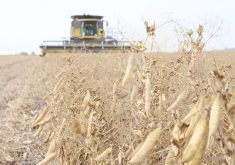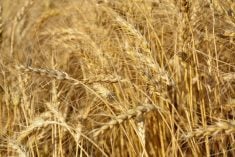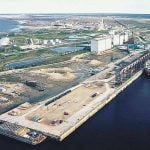BROOKS, Alta. – This year’s canola crop is in the bin but it’s never too early to start thinking about the next crop, says Troy Prosofsky of the Canola Council of Canada.
The agronomy specialist for southern Alberta is spending part of his winter telling growers how to improve their crop stand to increase the opportunity for maximum production. Mostly, it’s a matter of giving a quick course in Canola 101.
“We try to target that seven to 14 plants per sq. foot,” said Prosofsky.
Read Also

New wheat varieties offer Prairie farmers jump in yield
Three experimental wheat varieties developed by Agriculture Canada are showing yield increases of eight to 15 per cent over AAC Brandon wheat in registration trials.
“It’s all about reducing your risk. We can still produce a great crop on two to four plants per sq. foot. Most of us have done it. But the biggest thing is to try to focus on getting that great stand. Then if something does happen in the season … that resilient crop will pull through.”
He said the quest for a good stand can start now by checking seeding equipment for wear, rotating hoses and leveling the seeder from front to back and side to side. That puts producers in a good position for accurate seeding depth.
The rest of the recipe for good stands begins at seeding time, starting with an accurate assessment of soil temperature.
Prosofsky recommended measuring soil temperature twice a day at 8 a.m. and 4 p.m. for three straight days and then dividing by six to obtain an average temperature.
Optimum temperature is 10 C and he considers 4 C to be the minimum.
He said producers should in-crease seeding rates and slow down if logistics dictate seeding in colder soil.
Tube sock technology can help growers determine fan speed. Place a sock over an air hose, run the seeder for a few hundred yards and then check the captured seed for splitting and damage. A high percentage of damaged seeds indicates excessive fan speed.
Seeding speed also affects emergence and stand. Prosofsky defines ideal speed as “any speed that ensures the majority of your seed is placed at that half to one inch layer below the pressed wheel furrow, giving good separation from your fertilizer.”
Faster speeds create greater soil disturbance and can bury the back rows of seed, delaying emergence and creating an uneven stand.
If a producer is not willing to slow down, Prosofsky recommended increasing seeding rates and planning for an extra herbicide application because weeds will grow in bare spots where canola should have been.
Seeding depth should be checked in each field and in each soil type. Do it about 100 feet behind the seeder, where seeds were planted at true operating speed, he said.
A good plant stand can reduce the need for herbicide spraying and possibly insecticide use, he added. Spraying thresholds are calculated on optimum plant stands.















